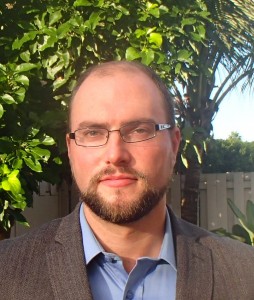NSU Newsroom
SharkBytes
Horizons
This version of NSU News has been archived as of February 28, 2019. To search through archived articles, visit nova.edu/search. To access the new version of NSU News, visit news.nova.edu.
This version of SharkBytes has been archived as of February 28, 2019. To search through archived articles, visit nova.edu/search. To access the new version of SharkBytes, visit sharkbytes.nova.edu.
NSU Professors and Assistant Professor Present Paper at Symposium and Publish Research on Chronic Illness
Travis J.A. Craddock, Ph.D., Assistant Professor for the Center of Psychological Studies (CPS) and the Graduate School of Computer and Information Sciences, along with CPS professor Gordon Broderick, Ph.D. and Nancy Klimas, M.D., professor at NSU’s College of Osteopathic Medicine and the founding director of the Institute for Neuro-Immune Medicine (INIM) recently presented a paper at the Miami 2014 Winter Symposium – The Molecular Basis of Brain Disorders . The paper was entitled, “Fire in the Head: Exploring the Role of Homeostatic Drive in the Perpetuation of Neuroinflammation in Brain Disorders.”
Craddock is also the Associate Director of Clinical System Biology Group for the INIM.
In addition, the group’s most recent paper entitled “A Role for Homeostatic Drive in the Perpetuation of Complex Chronic Illness: Gulf War Illness and Chronic Fatigue Syndrome” was published in the PLoS One journal, an international, peer-reviewed, open-access online publication.
This paper focused on a key component in the body’s stress response, the hypothalamic-pituitary-adrenal (HPA) axis. The HPA orchestrates changes across a broad range of major biological systems and when it’s not working properly, it has been associated with numerous chronic diseases including Gulf War Illness (GWI) and chronic fatigue syndrome (CFS). The research extended beyond conventional studies of the HPA axis and included its close interaction with sex hormones and immune function.
This paper extends conventional models of (HPA) function by including feed-forward and feedback interaction with sex hormone regulation and immune response. Using this multi-axis model, the group explores the role of homeostatic regulation in prolonging chronic conditions, specifically GWI and CFS. The publication can be found online (bit.ly/1iCmbV6).

